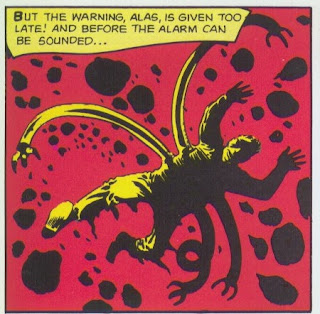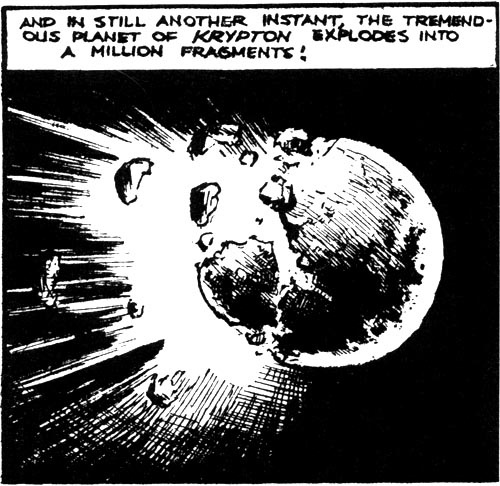Art by David Lloyd, V For Vendetta #3. Cover dated November 1988
And so we have the first cover, and the first of what I suspect will be a number of images from Alan Moore and David Lloyd's V For Vendetta. It's a beautiful cover, the glow of the explosion hiding the profile of V's face purposefully. While that fits with the story, it also pushes the reader to the idea that V's character is explosive and battle hardened. The burning man to the right and nearer the explosion than V flails helplessly, and is studiously ignored by our hero, whom Lloyd has posed in an art deco Superman manner, reminiscent of the Fleisher animated series.
The foregrounding work by the leaning iron bar in the bottom left of the cover is impeccable; it floats above the scene itself and makes you want to reach out and move it. Like the Doom Patrol panel from last week, this is another image that can easily have existed in real life, and while it draws from art deco stylings there's also a sense of the atrocities of World War II. V's shadow pulls us into the picture, and although we cannot see where he is looking, we are aware that he is confidently striding into a wasteland in a direction straight towards chaos; this is the first instance yet of a character moving, unhurriedly and purposefully, towards an explosion.




















